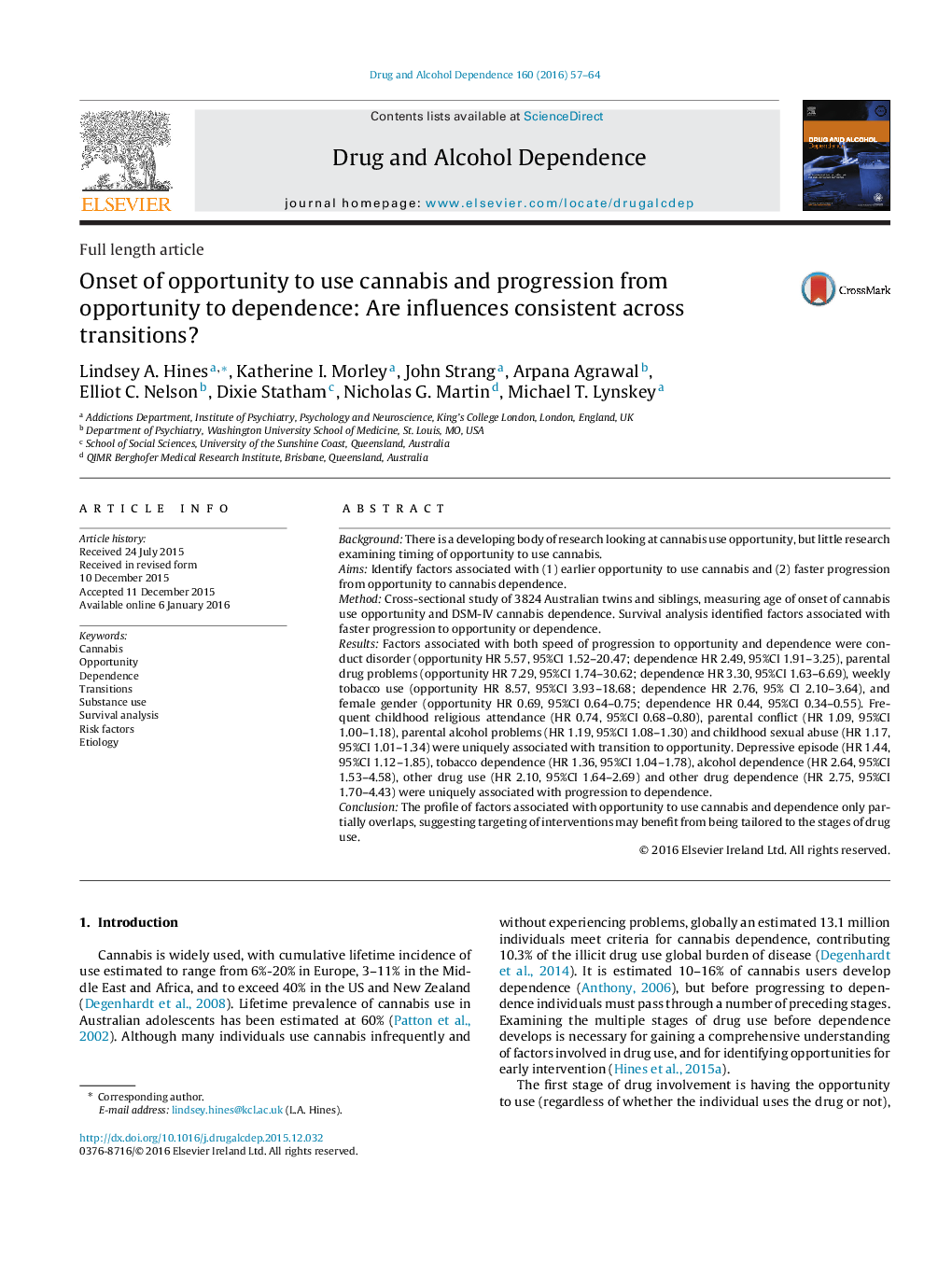| کد مقاله | کد نشریه | سال انتشار | مقاله انگلیسی | نسخه تمام متن |
|---|---|---|---|---|
| 1069705 | 1486131 | 2016 | 8 صفحه PDF | دانلود رایگان |
• The development of dependence is a multi-stage process.
• Risk factors may be stage specific.
• We focus on speed of transition to opportunity to use cannabis, and to dependence.
• The two transitions had a unique profile of risk factors.
• Evidence of stage-specific risk factors highlights intervention opportunities.
BackgroundThere is a developing body of research looking at cannabis use opportunity, but little research examining timing of opportunity to use cannabis.AimsIdentify factors associated with (1) earlier opportunity to use cannabis and (2) faster progression from opportunity to cannabis dependence.MethodCross-sectional study of 3824 Australian twins and siblings, measuring age of onset of cannabis use opportunity and DSM-IV cannabis dependence. Survival analysis identified factors associated with faster progression to opportunity or dependence.ResultsFactors associated with both speed of progression to opportunity and dependence were conduct disorder (opportunity HR 5.57, 95%CI 1.52–20.47; dependence HR 2.49, 95%CI 1.91–3.25), parental drug problems (opportunity HR 7.29, 95%CI 1.74–30.62; dependence HR 3.30, 95%CI 1.63–6.69), weekly tobacco use (opportunity HR 8.57, 95%CI 3.93–18.68; dependence HR 2.76, 95% CI 2.10–3.64), and female gender (opportunity HR 0.69, 95%CI 0.64–0.75; dependence HR 0.44, 95%CI 0.34–0.55). Frequent childhood religious attendance (HR 0.74, 95%CI 0.68–0.80), parental conflict (HR 1.09, 95%CI 1.00–1.18), parental alcohol problems (HR 1.19, 95%CI 1.08–1.30) and childhood sexual abuse (HR 1.17, 95%CI 1.01–1.34) were uniquely associated with transition to opportunity. Depressive episode (HR 1.44, 95%CI 1.12–1.85), tobacco dependence (HR 1.36, 95%CI 1.04–1.78), alcohol dependence (HR 2.64, 95%CI 1.53–4.58), other drug use (HR 2.10, 95%CI 1.64–2.69) and other drug dependence (HR 2.75, 95%CI 1.70–4.43) were uniquely associated with progression to dependence.ConclusionThe profile of factors associated with opportunity to use cannabis and dependence only partially overlaps, suggesting targeting of interventions may benefit from being tailored to the stages of drug use.
Journal: Drug and Alcohol Dependence - Volume 160, 1 March 2016, Pages 57–64
